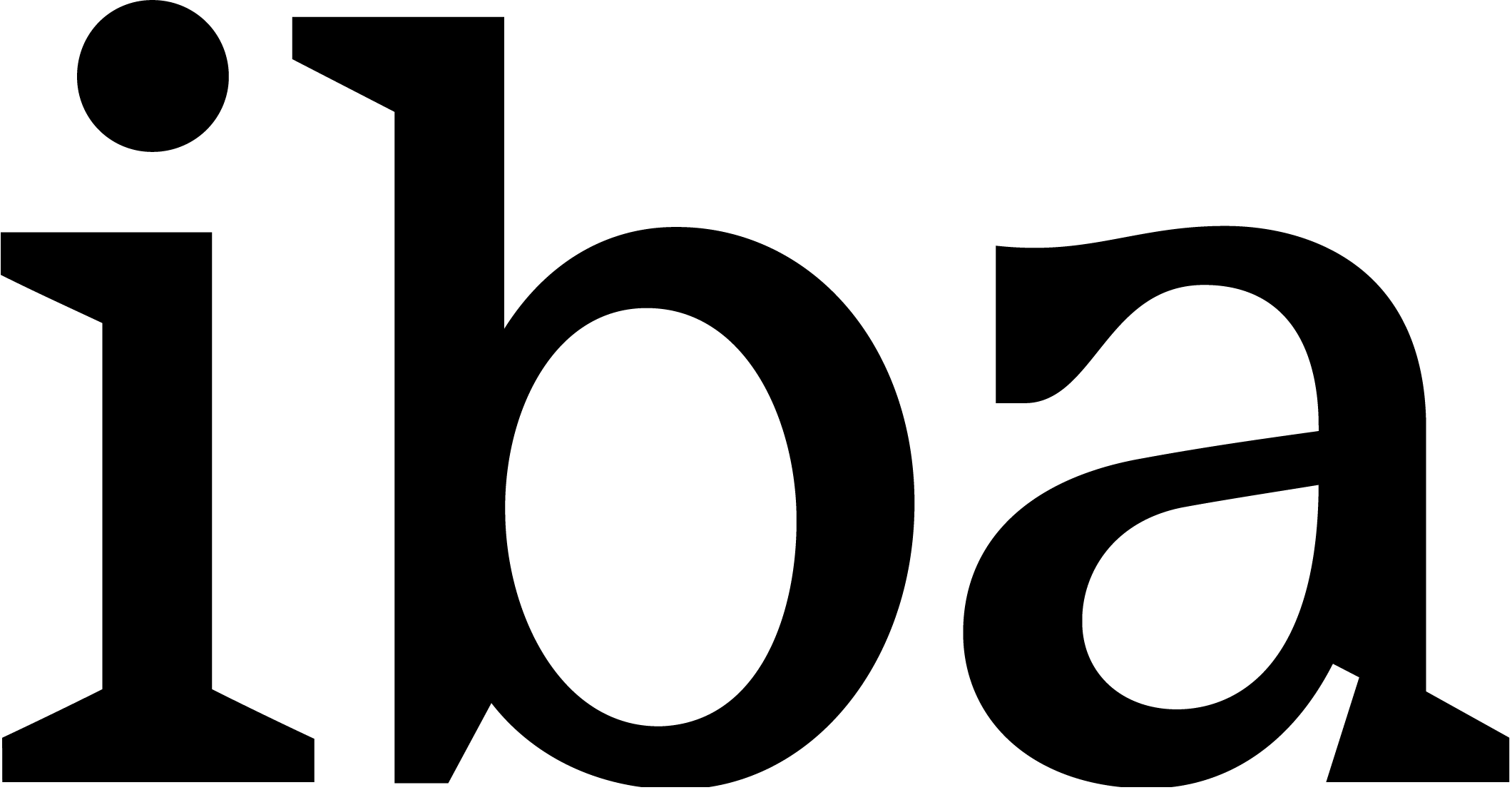The VII Moscow International Biennale for Young Art
2 December 2020Emeline Eudes (2019) “To (re)live With What is Alive: At the Junction of Art and Care”
6 December 2020Interview with Brook Andrew is an artist and scholar from Australia, based between Oxford and Melbourne. He was the artistic director of the 22nd Biennale of Sydney titled “NIRIN” and the first Australian Indigenous Artistic Director since the inception of the biennale in 1973.”
Interview to IBA submitted 25th November 2020
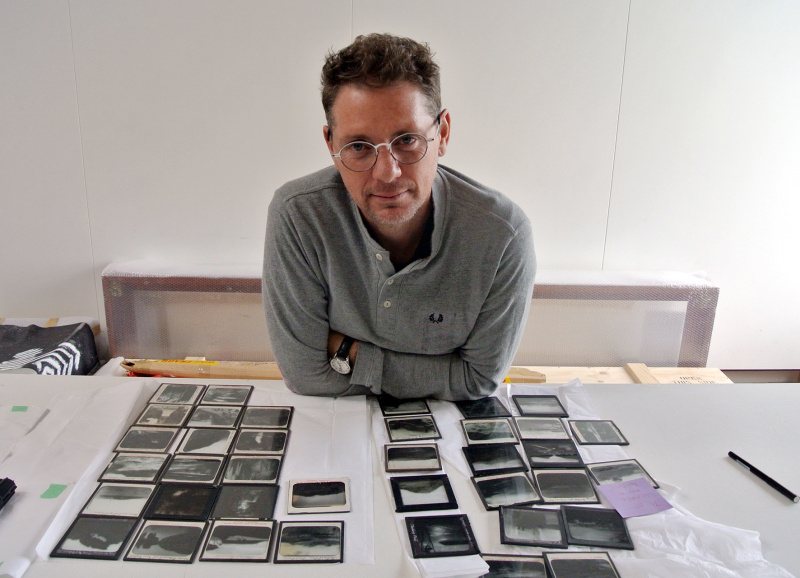
Portrait of Brook Andrew. Image credit: Trent Walter.
IBA: Can you give us an account of what the situation is with your project and how the Covid crisis affected it?
The Biennale opened in March 2020 and all the artists were in Sydney for a week-long celebration of openings and performances throughout the six different venues. We also held aabaakwad, which was the First Nations-led conference in collaboration with Wanda Nanibush from the Art Gallery of Ontario. After that, it was quite sudden that the Biennale closed, and the team of the Biennale worked very hard to digitise, for example, walkthroughs of the exhibitions, which is all online. Many events in the public program which we called NIRIN WIR, for example conversations between artists and with myself. These things were going to happen anyway, and they went directly online. I think one really interesting thing was that even though the Biennale did close down to the public for a few months it did re-open again, it’s now the longest running that the Biennale of Sydney has ever been. People could eventually go and see it again if you were in Sydney and New South Wales. It also activated a kind of longevity around the visibility of it internationally and locally. People who didn’t even know what the Biennale was would then find out what it was. There was a lot of publicity generated.
Because of the subjects and the artists in NIRIN, people were quite interested to learn more and so I’ve done many online talks at Cornell University with Joelene Rickard, with the Tate Modern, with the Guggenheim, with Asian Art Archive, with the Casa Asia, with Goldsmiths, with Monash University, with the University of MelbourneI think that, if anything, this created a really great storm.
Furthermore, I was contacted by Max Delaney from the Australian Centre for Contemporary Art in Melbourne, and we curated with Annika NIRIN NAARM (def naarm) an exhibition of video works with a few sculptural works as well. Then, because of the pandemic in Melbourne and hard restrictions, we couldn’t open that show to the public, but we did create an online film festival with artists such as Tony Albert, Teresa Margolles, Denilson Baniwa, Justin Shoulder, Rehab Nezzal and many more.
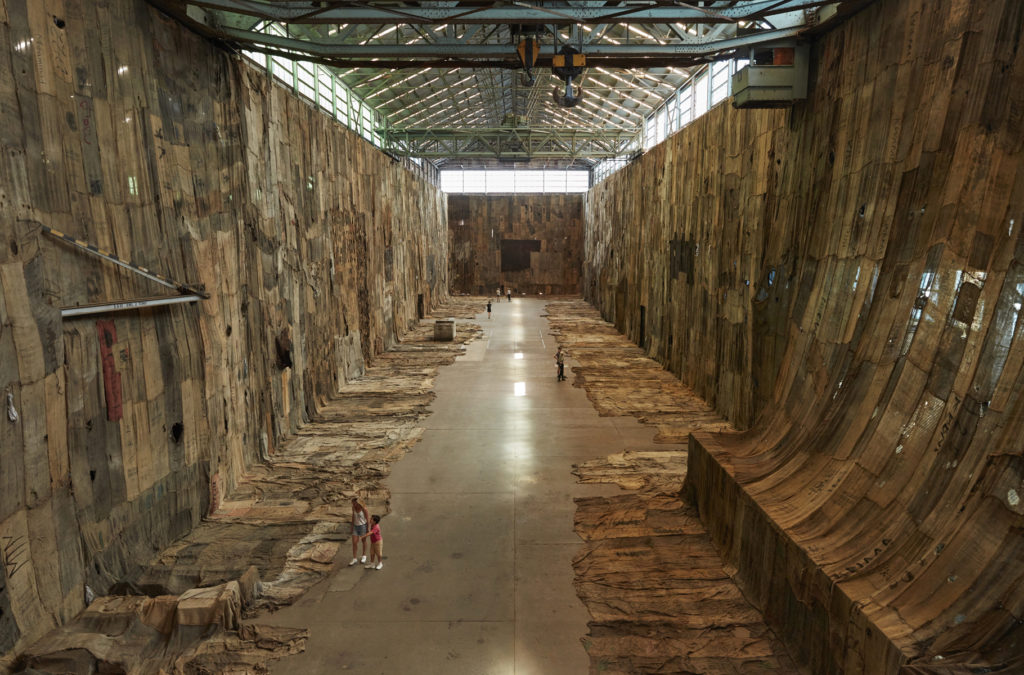
Ibrahim Mahama, No Friend but the Mountains 2012-2020, 2020,
charcoal jute sacks, sacks, metal tags and scrap metal tarpaulin, dimensions variable. Installation
view (2020) for the 22nd Biennale of Sydney, Cockatoo Island. Courtesy the artist; White Cube; and
Apalazzo Gallery, Brescia. Photograph: Zan Wimberley
IBA: Did COVID impact the way you chose to work with artists, travel limitations or other similar issues?
COVID restrictions hit Sydney two or three weeks after NIRIN opened to the public. So mostly this affected the public programmes. A lot of this had to be moved online and also some artists had to rethink their project. For example, Justin Shoulder was going to do a public performance with Bhenji Ra at the Powerhouse Museum so instead both Justin and Bhenji created new video works; Justin’s was showcased at ACCA as part of the online film festival and Bhenji’s had its own online event and it’s now on the biennale website. Sarah Houbolt, who is a physical theatre performer and access advocate, made a podcast that is available on the biennale website. Others like, Randy Cutler from Canada, was going to visit later after the biennale opening and create performative walks as part of the public program NIRIN WIR; she couldn’t come because of the pandemic. However, her project too was made available online as a podcast.
NIRIN WIR was designed as a huge public programme. The largest public programme in the history of the Biennale I believe. We merged the “education” program into an artist-led expansive, creative program into the community.
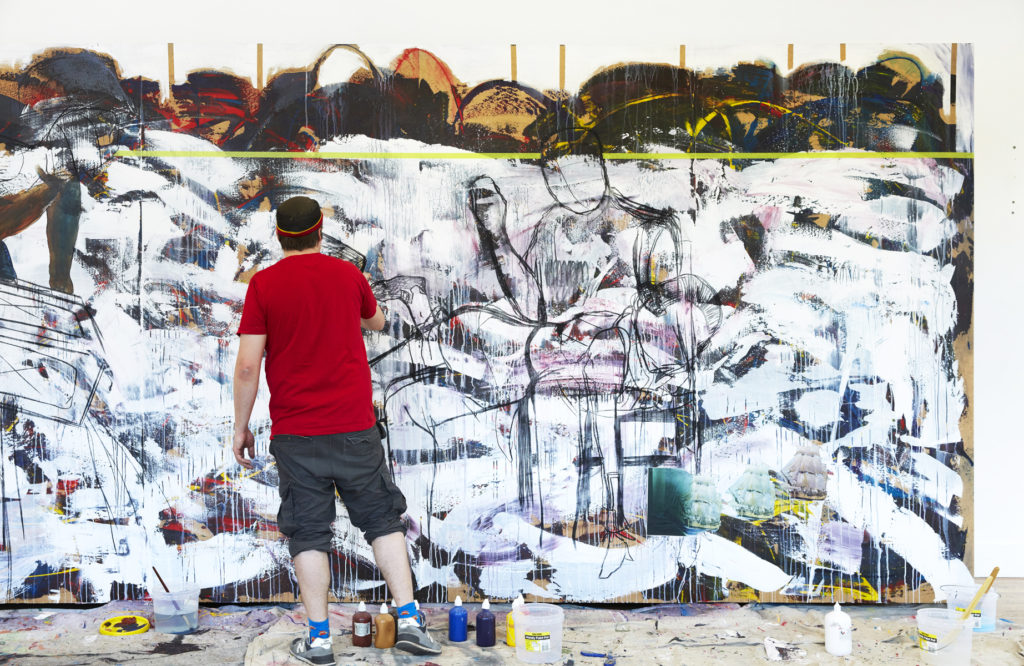
Anders Sunna installing SOAÐA. Anders Sunna, 2020, mixed media, dimensions variable. Installation progress view (2020) for the 22nd Biennale of Sydney, Campbelltown Arts Centre. Courtesy the artist. Photograph: Zan Wimberley
IBA: As an institution that interacts more than others with the wider urban fabric, do you feel this can also be a moment to rethink a neighbourhood relationship with the audience?
NIRIN was always designed to have a neighbourhood relationship with the audience – regardless of the pandemic. For example, the venue Artspace, they work with its local community; and the Colectivo Ayllu who exhibited there worked with a group of locals to create their work. Colectivo Ayllu also worked with the Australian Print Workshop in Melbourne. Anna Boghiguian had a residency at Monash University in Melbourne to create her work and involved art students there. There is a long list: the Blacktown Native Institute, Latai Taumoepeau, Eric Bridgeman, Tony Albert and so on. Or take the example of BE. Collective in collaboration with Noakes Group who together created Haiveta. They restored a Sydney ferry and adorned it with Pasifika women’s markings as a way of reclaiming memory of women’s tattoo practice outlawed through colonisation. I would say that at least a half of the works were made with communities as a way to dialogue with them.
We did involve a lot more local neighbourhood in this Biennale which was probably the most locally imbedded. Another example is our inclusion of STARRTS, the New South Wales Service for the Treatment and Rehabilitation of Torture and Trauma Survivors. We also worked with FUNPARK a community led project in Mt Druitt, Western Sydney, with Bankstown Hip Hop Festival. Even Mohamed Bourouissa worked with two local musicians, MC Kronic (Egyptian/Australian) and also Nadeen (Yuin).
The pandemic in this context brought us closer. People were more concerned about each other. Especially as the pandemic hit after NIRIN opened, so those relationships were already becoming formed and solid.
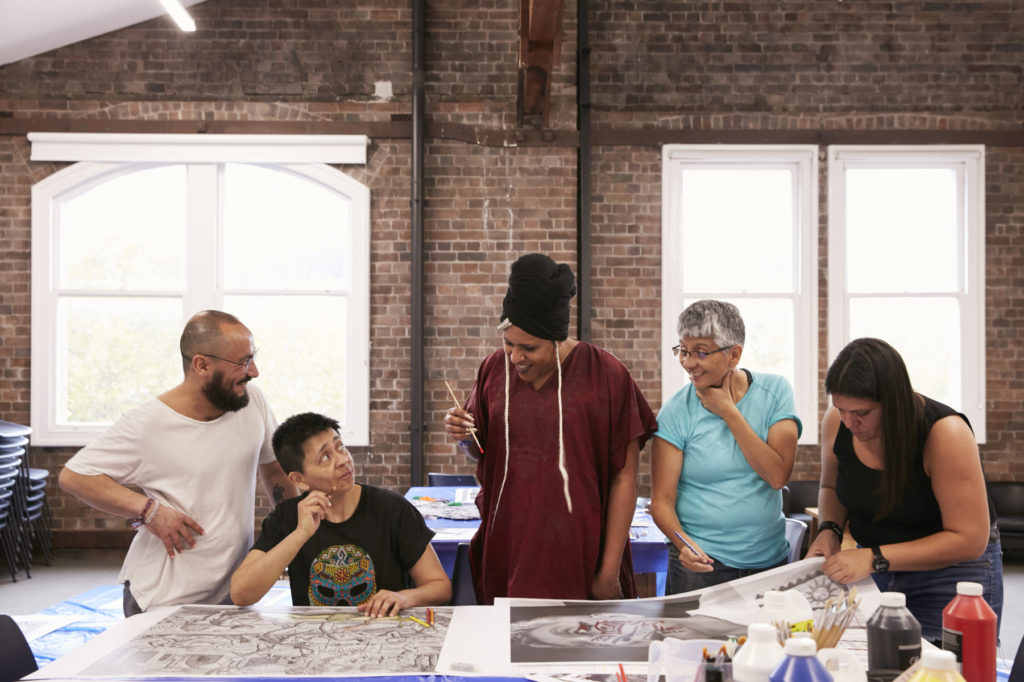
Colectivo Ayllu installing don’t blame us for what happened, Colectivo Ayllu, 2019-2020, mixed media installation with print walls, video projections, audio and altar, dimensions variable. Installation progress view (2020) for the 22nd Biennale of Sydney, Artspace. Courtesy the artists. Photograph: Zan Wimberley
IBA: Has this situation sparked a support in your region for artists or art institutions? And, as a follow up, have you undertaken direct measures in this sense?
If anything, the relevance to this question is more to the point about people understanding and looking at artists who are not from particular art markets or being part of the “well-known” artists. It has really shined a light on other parts of the world that are often ignored, or not seen as real art or as seen as commodification within a certain art sector or art theoretical presence.
I also think that the dominant and visible art practice in the art world only makes up, probably, 10% of what I think is art out there in the world. I think that artists in this Biennale from Haiti, from Brazil, and shadow areas of the world, many of them have not shown in biennales before. Look at Denilson Baniwa, whose video work in NIRIN was actually a protest he did at the Sao Paulo Biennale. And many, like Barbara McGrady, who is a very respected senior Aboriginal photojournalist; she was beside herself being in this Biennale. So, I think it was more about the focus on artists and their representation than about organisations.
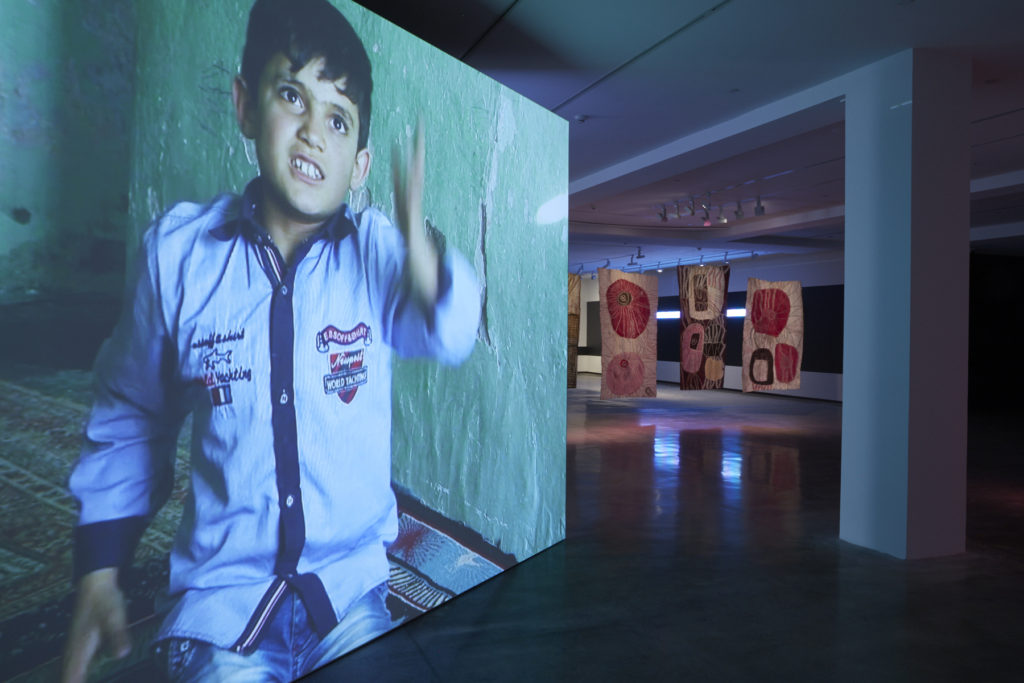
Progress installation view, Museum of Contemporary Art Australia, 2020. Photograph: Zan Wimberley
IBA: Did the way you engaged with the local communities which you described above also have an impact on the perception of the artists? Did it lead to an overcoming of what is often felt like a gap between “art world” and its surrounding?
Well this was happening within artists’ projects. So, for sample, with Mohamed Bourouissa, he went for a residency down at Bundanon Trust south of Sydney and he understood that the acacia (wattle tree) came from Australia, even though he grew up with it in Africa. He didn’t realise the kind of impact that would have on him, eventually leading to the collaboration I’ve mentioned earlier with Nadine and MC Kronic.
I could name many other projects like this. For example, Gina Athena Ulysse, from Haiti originally, but lives in the United States, came to Australia. It was Aboriginal culture that really inspired her to become an anthropologist in the first place. But she is a feminist and a performance artist and she connected a lot with Aboriginal people in Australia. She went up to Darwin, visited other places in Australia and had a very imbedded experience, the same with Arthur Jafa. He had a very particular idea of Aboriginal art from Papunya Tula, but then realised that art practice and the Aboriginal experience is extraordinarily diverse throughout Australia.
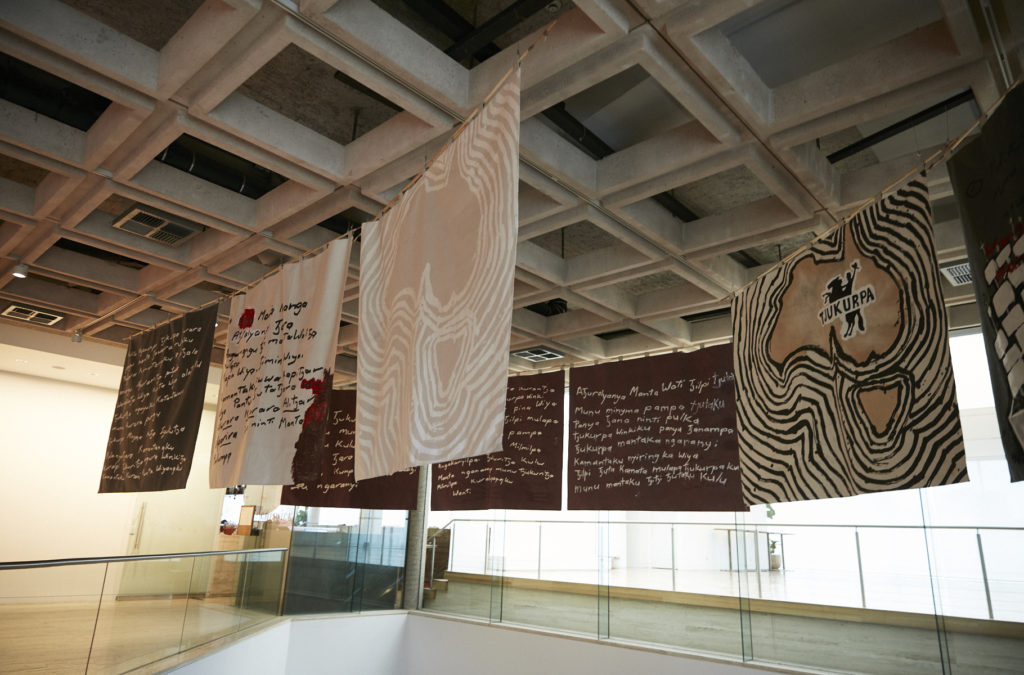
Kunmanara Mumu Mike Williams, Kulilaya munu nintiriwa (Listen and learn), 2020, installation of UV cured flat-bed prints on hand finished untreated canvas with alterations in paint, ink and tea; suspended from spears made by kulata (spearbush) and mulga, malu, pulyku (kangaroo tendon) and kiti (mulga leaf resin), dimensions variable. Installation view, detail (2020) for the 22nd Biennale of Sydney, Art Gallery of New South Wales. Courtesy Mimili Maku Arts. Photograph: Zan Wimberley
IBA: As you mentioned that a large part of the exhibition as well as the public program took a digital form following the outbreak of Covid19, did you have any further reflection on how to approach this new and different type of space?
Unfortunately, I didn’t curate or collaborate with the Biennale, the transition to online exhibitions when COVID hit. Even though I am extremely happy with the virtual walk through of the exhibitions spaces and artworks, I would like to have had meaningful input regarding other aspects of the online content such as artist talks and gatherings – through NIRIN’s curatorial methodology as artist and First Nations led philosophies.
When the Biennale did close, the team worked really hard to digitise everything so that it could go online. It’s very well documented; probably the most digitally documented biennale now on the biennale website and on the Google Arts platform. I am very thankful for that. However, I was not invited to collaborate with the online exhibitions and I think that when a situation like COVID happens, artistic directors need to continue their role as Artistic Director within the online platform.
I think it’s important to stress this aspect because people think that the online space only considers communication and content – it is much more than this. I am conscientious of the reasons why the Biennale proceeded in this way, but I would have done it differently. I think there are strategies of generating a web presence that repeat the status quo, so they end up being on You Tube, they end up being on Instagram, they end up being on certain platforms that a lot of communities where these artists are from, probably don’t even have access to. This was a missed opportunity to shape that transition to the online platform with the methodologies of NIRIN.
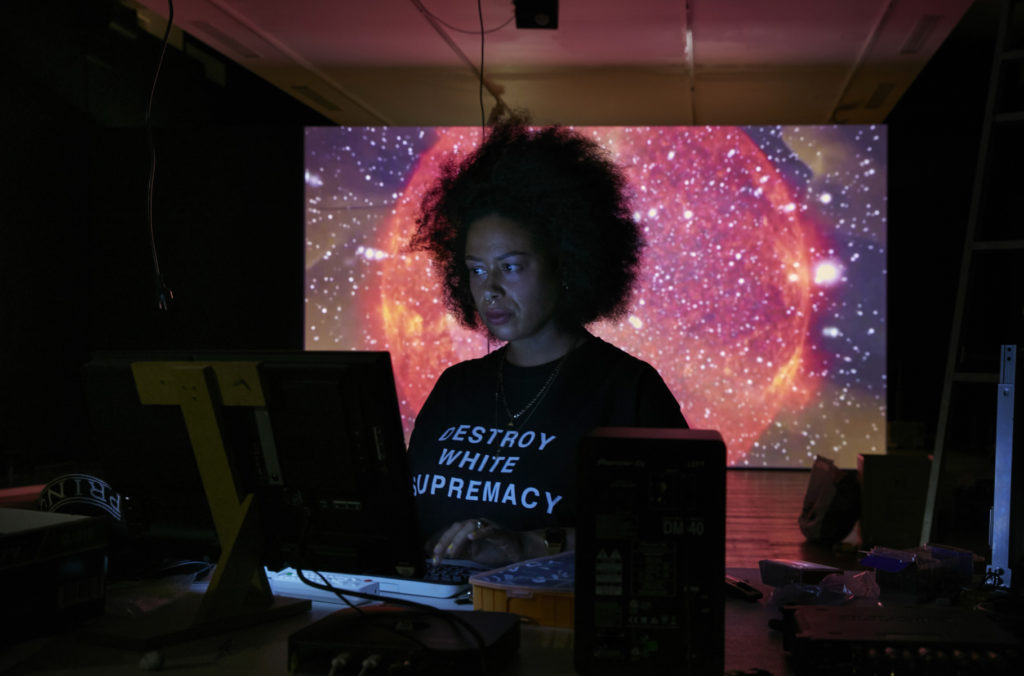
annah Catherine Jones installing Owed to Diaspora(s), Hannah Catherine Jones, 2020, mixed media installation, dimensions variable. Installation progress view (2020) for the 22nd Biennale of Sydney, National Art School. Courtesy the artist. Photograph: Zan Wimberley
IBA: Within NIRIN, you specifically placed at the centre of the biennial, cultures and worlds too often defined as marginal or as other. Do you see this effort hindered or expanded by the necessity to shift to an online platform, and how does this change the project overall in this respect?
I don’t use the words marginal or other, that’s why I called it NIRIN, the edge is really our centre. I think that, if anything, I’m fighting against the assumption of marginalisation. We have to remember that people who are called marginalised from the so-called centre, are centered in their own communities. It doesn’t mean that artists or communities aren’t under incredible duress or stress. The issues are absolutely urgent regardless if it’s around the environment or racism or solidarity or trans or queer lives, or even creative mediums that have power for the context that they are talking about.
The move online, as I mentioned before suffered mainly because it lost being artist-led and artistic director-led. There are certain communities that are sensitive or don’t have access to certain high width band of internet for example or they may not have access to smartphones. In fact, I know a lot of them don’t. I think that the kind of finances and time which was invested in this could have been put into a small group of artists. We could have had an advocacy group or something like that of maybe 15 artists to create ways of disseminating information to not only those communities but other communities who probably don’t even have the internet.
An example for an altenative approach could have been to produce artist zines on photocopying machines or mailouts from different spaces and places around the world. Colectivo Ayllu, for example, and Jota Mombaça are artists that are used to doing this sort of thing; very low fi, very cheap, but very organised, very grassroots. I think those kinds of strategies would have been perfect for the pandemic.
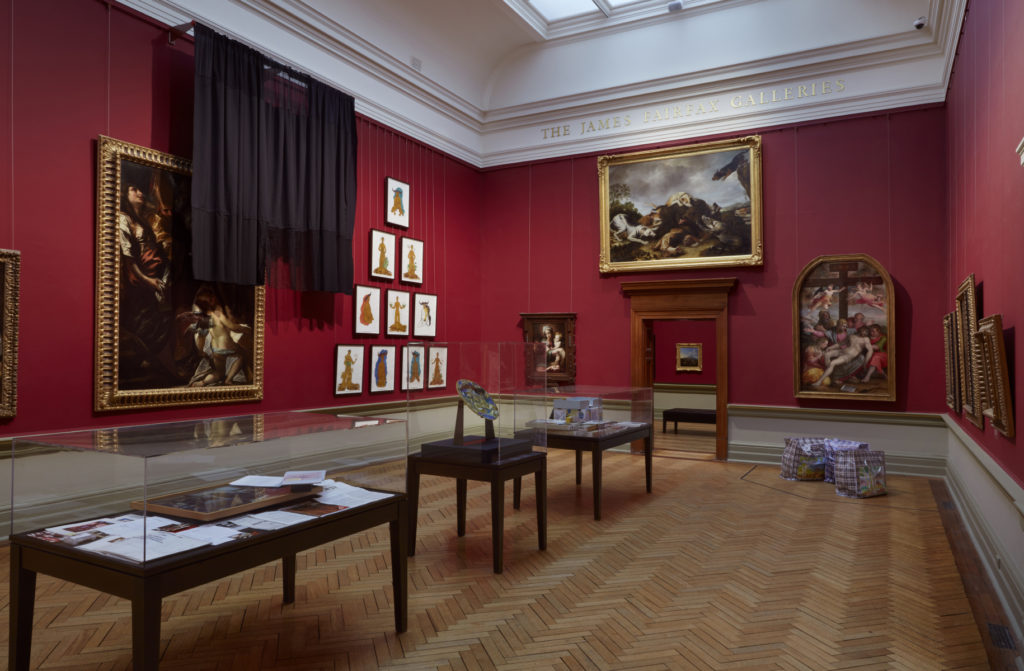
Installation view (2020) photographed in the Grand Courts at the Art Gallery of New South Wales, Sydney. Photograph: Zan Wimberley.
